This document discusses data representation and number systems in computing. It covers the following key points in 3 sentences:
Data such as numbers and coded information are represented using bits and bytes which can represent values, characters, or instructions. Common number systems used in computing include binary, decimal, octal, and hexadecimal, which use different radixes or bases to represent quantities with distinct symbols. Methods for converting between number systems involve grouping bits or digits into the appropriate radix and determining the place value of each position to arrive at the value in the target base.
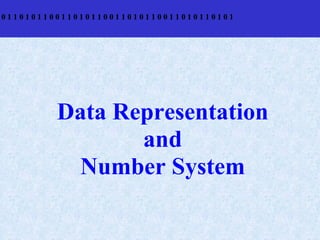

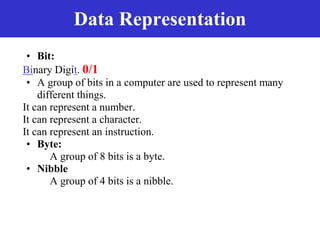

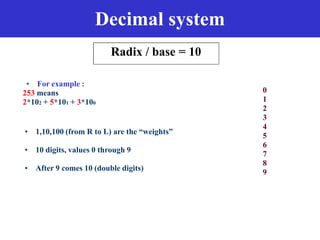


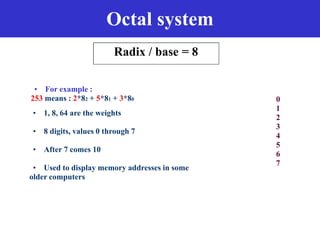




























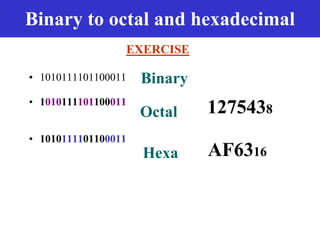






![r’s complement
• Given a number N in base r having n digit, the r’s
complement of N is rn –N for N < > 0 and 0 for N=0.
• Also, r’s complement is equal to:
= rn –N
= rn –N – 1 + 1 (Add and subtract 1)
= [(rn –1) –N] +1 (Rearranging the terms)
= (r-1)’s complement + 1
• For decimal numbers, there exist 10’s complement.
• For binary numbers, there exist 2’s complement.](https://image.slidesharecdn.com/numbersystem-120918023533-phpapp01/85/Number-system-44-320.jpg)



















